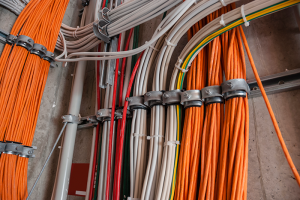ASHRAE guidelines and standards open for comment
The below drafts are open for 45-day public reviews
BSR/ASHRAE/IES Addendum bj to ANSI/ASHRAE/IES Standard 90.1-2022, Energy Standard for Sites and Buildings Except Low-Rise Residential Buildings (first public review draft) Commenting is open Feb. 28 to April 14.
The Simplified Performance Rating Method is an alternative, streamlined path to model-based compliance for simple buildings. This addendum adds an additional normative appendix to the standard which would provide an alternative whole building performance-based approach for simple buildings with the eventual goal of encouraging more buildings to comply using a performance-based approach. It includes a set of ‘partial prescriptive’ requirements, similar to the HVAC System Performance approach in Normative Appendix L, which requires compliance with prescriptive requirements that are critical to be met but cannot be analyzed using the simplified modeling approach.
BSR/ASHRAE/IES Addendum bx to ANSI/ASHRAE/IES Standard 90.1-2022, Energy Standard for Sites and Buildings Except Low-Rise Residential Buildings (first public review draft) Commenting is open March 7 to April 21.
Currently, ASHRAE 90.1 requires labs to have some combination of VAV and/or exhaust air heat recovery (Option a or b) or to not fully condition lab spaces (Option C). This addendum eliminates Option C because it encourages space conditions that would not meet minimum Standard 55, ASHRAE’s comfort standard, and encourages inhuman conditions for lab workers. The addendum essentially expands the VAV and/or heat recovery options to require both VAV and heat recovery (with some exceptions). This was justified with lifecycle cost analyses showing both are cost effective.
The below draft is open for a 30-day public review
BSR/ASHRAE/ASHE Addendum s to ANSI/ASHRAE/ASHE Standard 170-2021, Ventilation of Health Care Facilities (second public review). Commenting is open March 21 to April 20.
A growing trend within occupied buildings is to install prefabricated occupiable structures within existing spaces to allow for temporary private occupancy. These structures are often called pods and can be of various shapes and sizes, and may or may not have electrical power, plumbing, or furniture, and may be sized for 1 or more people. These pods are being used for sleeping, meditating, working, meeting, lactating, and more.
The 2024 edition of the National Fire Protection Association's NFPA 101®, Life Safety Code®, has added requirements for these spaces. This code has noted two different prefabricated structures; sleep pods and modular rooms. These structures are different than designed sleeping structures such as capsule hotels or private suites in transportation spaces. Sleep pods and modular rooms are often added after the building is constructed and occupied, therefore were not part of the ventilation design. However, it is important that these occupied spaces are still provided with ventilation air and manufactured with passive fixed opening, forced fan driven airflow, or means to connect to the mechanical ventilation system. These sleep pods and modular spaces are class 1 spaces, and thereby if they are provided ventilation air by transfer air, they shall be located only in class 1 spaces. Manufacturers should indicate method of ventilation and rates of airflow the structure is designed for.
Visit the ASHRAE portal to make comments on the above addenda.




